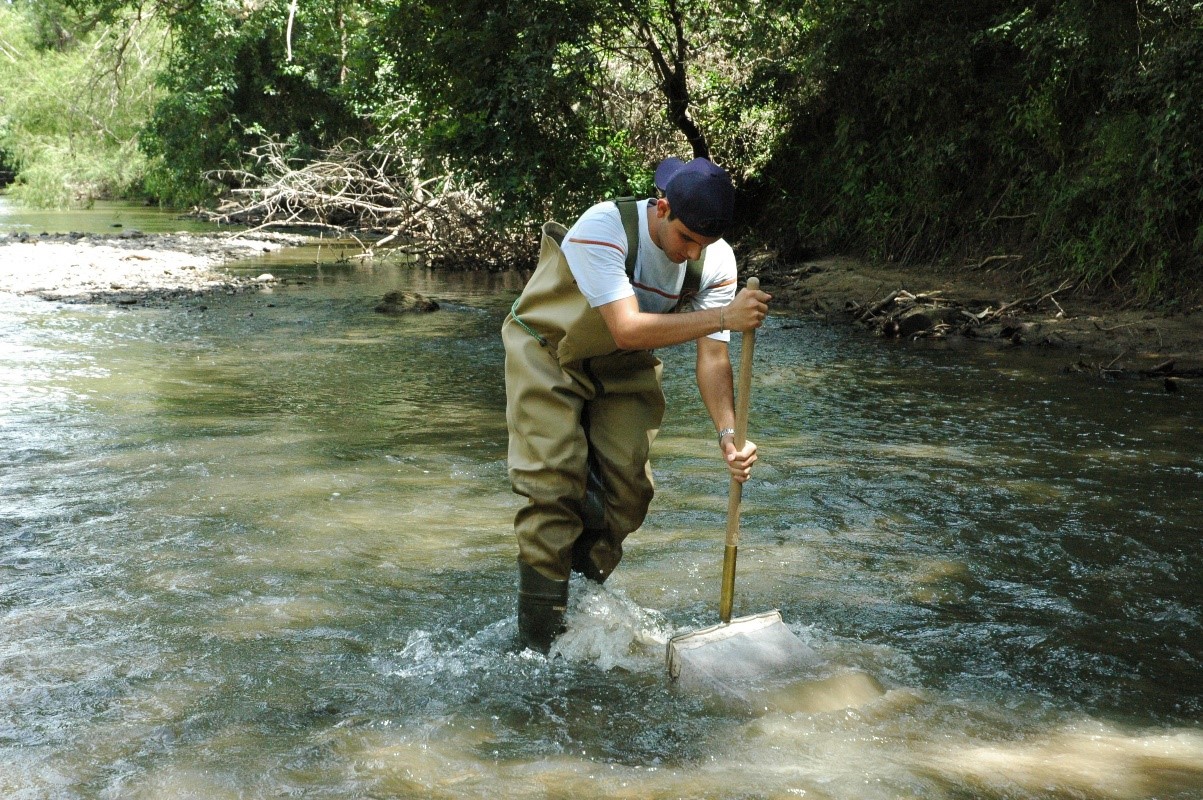Last Updated on March 31, 2023
As part of our commitment to safe, clean, enjoyable creeks and rivers, the San Antonio River Authority (River Authority) relies on water quality scientists, aquatic biologists, stormwater scientists, and environmental investigators to collect and analyze data that identifies positive and negative conditions in the San Antonio River. As part of water quality monitoring efforts, our aquatic biologists use a variety of indicators and some of them can be found in nature itself.
Benthic macroinvertebrates are an example of bio-indicators of river health. Read along as we share info from our aquatic biologists, who you may see collecting water samples to monitor the health of our creeks and rivers when you visit the river.
What are Benthic Macroinvertebrates?
Mayfly larvae (Family Ephemeroptera) are found in the San Antonio River Basin
Benthic macroinvertebrates are organisms that lack a backbone and are visible without the aid of a microscope. Aquatic macroinvertebrates are good indicators for stream health. They spend all or most of their lives in the stream, are easy to catch and the different species have different tolerances to pollution. These aquatic macroinvertebrates live under and on rocks, leaf litter, woody debris, plants in the stream, and sediment of the stream bottom. They are also found in different flow types: fast-moving and slow-moving streams. It’s easy to collect macroinvertebrates. Simply pick up rocks or sticks from a stream and look closely!
Benthic macroinvertebrates are a vital part of the food web and play an important role in our ecosystem. They are affected by chemical, physical, and biological conditions of a stream. Their limited mobility does not allow them to escape pollution and show effects from long- and short-term pollution events.
River Health Indicators

River Authority staff conducting a kick sampling technique
(SCIENCE TERM AHEAD! A taxon [or plural: taxa] is a unit of any rank designating an organism or a group of organisms. This is also known as a taxonomic unit.)
The abundance and diversity of the various taxa are indications of river health. Rivers in healthy biological condition support a wide variety and high number of macroinvertebrate taxa, including many that are intolerant of pollution. Samples yielding only pollution–tolerant species or very little diversity or abundance may indicate a less healthy waterbody.
Some of the species that may be found in the San Antonio River Basin include:
Water Penny Dragonfly Midge
Riffle Beetle Crayfish Leech
Scud Blackfly
Mayfly Caddisfly Aquatic Worm
Learn More About River Health!

The River Authority developed the San Antonio River Basin Report Card to shine a light on the healthy and the unhealthy aspects of the basin in order to educate the public and serve as a catalyst for community discussions that lead to individual choices and public policy decisions, actions, and investments that support a sustainable San Antonio River Basin. The River Authority selected 12 indicators that were based on observations of basin health and comprised of accessible and defensible data that’s easy to understand for all audiences. We invite you take a look and learn the status of the basin and what you can do to help improve the health of our basin!





